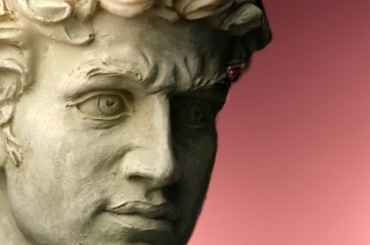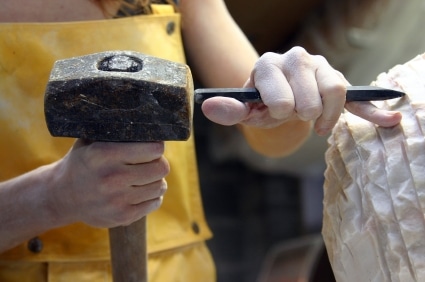The Art Of Sculpting Conference Design
Recently I wrote Two Reasons Why Crowdsourcing Your Conference Content Won’t Work.
In that post, I referred to organizations that were using crowdsourcing as a voting platform to source their conference topics, speakers and sessions. These organizations were not using crowdsourcing in its purest form as a distributed problem-solving and production model. It was strictly a way to receive and vote on input for the most popular topics or speakers to be offered at the conference.
Some felt that I was not giving attendee and customer feedback enough weight in the conference planning process. It was not my intent to imply that taking feedback from attendee’s was inappropriate or the wrong thing to do. I believe it is vital to the conference success.
Similarly, Jeffrey Henning wrote The Backlash Against Voice Of The Customer Research. Henning writes that the challenge with the voice of the customer is assuming that the customer has the answers. He states, “VOC is an input, not an output.”
Henning likens the data received from the voice of the customer to a chunk of marble. He says that new product design must be carved from that marble. You don’t just set the marble out to sell without sculpting and creating a new image.
The Marble Sculptor
In sculpting, the artist starts by selecting the right stone for carving. The sculptor analyzes the marble from many perspectives looking for inspiration. Renaissance artist Michelangelo claimed that it was his job to free the human form trapped inside the block.
Some artists start by forming a model in clay or wax and then copying it in stone. Some carve with only an image in their mind.
Using the right tools, the sculptor carefully chisels away marble that distracts from the main image. Often he or she starts by pitching, knocking off large portions of unwanted stone.
Using controlled strokes, the carver places the point of the chisel on the edge of a selected part of the stone and hits it with a mallet. The artist must strike the end of the tool accurately as the smallest miscalculation can damage the stone or the sculptor’s hand.
Then the artist moves to the roughing out stage. Many sculptors work rhythmically, turning the tool with each blow so that the stone is removed quickly and evenly.
Once the general shape of the statue has been determined, the sculptor uses other tools to refine the figure. Some tools add texture to the figure. Others create parallel lines. Sometimes, the artist uses pencil, charcoal or chalk to designate an area of stone that needs to be removed. Generally, the carver uses shallower and more frequent strokes in this process.
In the next step, the sculptor uses tools to enhance shapes and create fine details like drapes in clothing or curly hair. In the final stage of carving, polishing, the artist uses sandpaper or emery. This brings out the color of the stone, reveals the surface patterns and adds sheen. Oxides may be applied to give the stone a reflective exterior.
Crafting The Conference Content And Schedule
Planning and organizing conference content is much like this sculpting process.
First, conference organizers should collect data from their past attendees and various listening posts, crowdsource topic ideas and suggestions, ask for feedback, and survey members for new ideas. All of this data received is similar to a chunk of marble. It’s the initial input for the conference design.
Event organizers should then analyze the data, looking carefully for patterns, relationships, common themes and connections. Just as the sculptor sees shapes in stones, conference organizers need to see what’s beneath the surface of some of the customer suggestions, understanding and interpreting their comments instead of reading them at face value. This is a skill that takes time to refine and an advisory committee can assist in interpreting what’s important and relevant.
Next the meeting professional should use a heavy chisel to rough out the stone, discarding customer commentary that doesn’t apply to the focus at hand. Using the skills of interpretation and analysis, the event professional should begin to refine the shape of the event by weighing the relative importance of the top attendee recommendations with those of niche groups and advanced audiences. Here’s where the meeting professional should begin to define and identify specific topics and content for the conference.
From this, the organizer can create a draft schedule with potential topics and sessions. That draft can be circulated for comment and feedback among peers and advisors.
Once a draft is created, the event professional should also consider the art concept of negative space, looking at the space and time between and around sessions. Are any of the sessions connected in some way? Are their threads that should be highlighted? Is there enough time between the sessions to connect with others and make the learning stick? Just like in art studios, can the organizer create lounge and viewing areas where attendees can gather to discuss their experiences?
Once the conference design is finalized, the organizer needs to secure speakers and panelists to meet the identified content. During this process, the event organizer needs to cycle back and forth between the ideal and practical design, chipping away at stone as needed as not all speakers will be available.
Only through the use of the proper tools and processes can you carve a beautiful product out of the stone of customer data. Resist the backlash against using customer input and see it for what it really is: the essential foundation of successful conference content design.
What other ways is designing conferences or events like creating art? What tools do you use in crafting your conference content?




Social comments and analytics for this post…
This post was mentioned on Twitter by Jeffhurt: The Art Of Sculpting Conference Design #eventprofs #assnchat http://ow.ly/1uQcx…
Some good points made here, but I’m more interested in the implementation of the tools and processes my peers are using to craft their content, than I am about the merit of crowdsourcing or shaping marble. Show me the X’s and O’s.
‘@Joshua
Thanks for adding your feedback. Anyone got some examples they want to share with Joshua?
Nina Simon writes a ton of great stuff on this kind of topic – the participatory experience – from the “Museums 2.0” (her blog title) point of view. Her blog is at http://museumtwo.blogspot.com/. I think think could be a great source of inspiration for event planners interested in these kinds of ideas (artist vs. audience, experiential learning, digital curation, etc).
‘@Maddie
Thanks for sharing that great resource with us. Good stuff there.